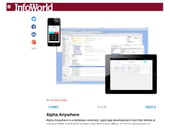There's a dirty little secret about mobile apps that many businesses don't talk about: The retention problem. It's hard enough to get people to download your app. But it may be even tougher to get them to keep using it after they've used it for the first time --- and that's the biggest problem your app faces. A study by Localytics shows that 2015 was a reasonable year for overall app retention, although it lagged well behind 2012. The study found that in 2015, in 18% of apps, users were still using it within three months of the first time they opened it. That compares to 24% for 2012, 18% for 2013, 16% for 2014, and 18% for 2015. This should be sobering news, because it means that even in the best year, on average only one in four people were loyal to any one app. How to Increase Mobile App Retention Not all the news is bad, though: There are things you can do to improve your app's retention rate. Annaliese Henwood, writing in the Stuzo blog, (http://www.stuzo.com/insights/mobile/increase-mobile-app-retention-rates/) outlines the major five reasons retention rates are low:
- Your app doesn't provide a valuable experience. It may have too many features, but lack a core, coherent purpose, for example.
- Your app isn't reliable and efficient. It may crash, load slowly, or require a login before offering any value.
- Your app invades user privacy. It may ask for unnecessary permissions and gather too much personal data.
- Your UX design is poor. It may require that too many steps be taken to accomplish common tasks.
- Your app isn't customer-focused, and doesn't address important user issues.




Comment